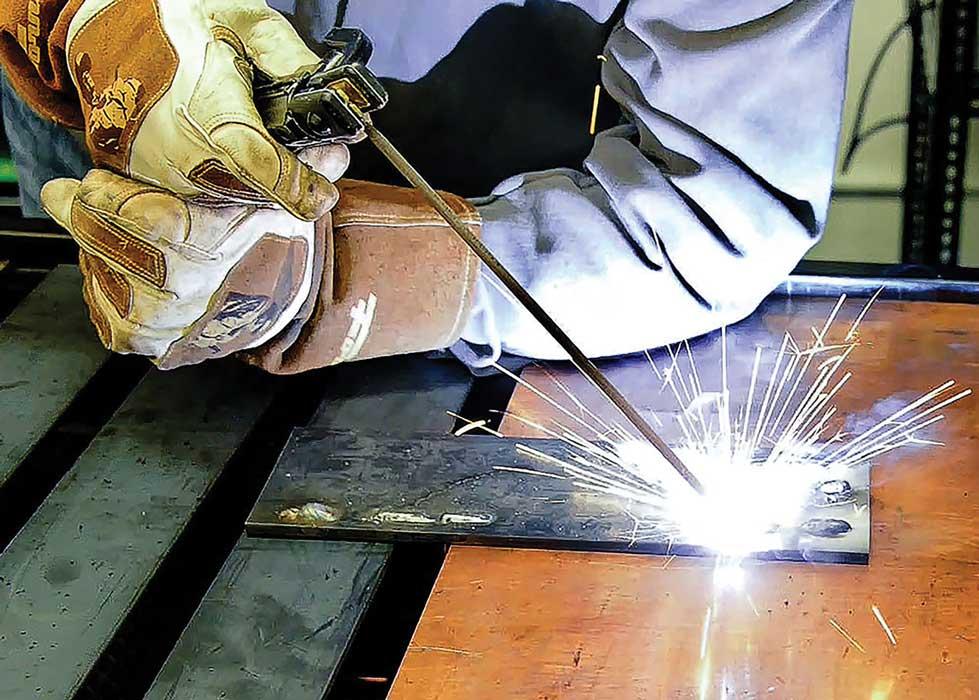Advanced Welding WPS: Tailoring Specifications for Complicated Jobs
Advanced Welding WPS: Tailoring Specifications for Complicated Jobs
Blog Article
Getting Welding Quality: Revealing the Tricks of WPS Execution and Optimization
In the realm of welding, achieving quality is a quest that pivots on the careful execution and optimization of Welding Treatment Specifications (WPS) By delving into the essential components, strategies, challenges, and best methods linked with WPS, a globe of welding excellence awaits those who are ready to discover its midsts.
Value of WPS in Welding
The Relevance of Welding Treatment Requirements (WPS) in the welding sector can not be overstated, working as the foundation for making certain uniformity, top quality, and safety and security in welding procedures. A WPS gives comprehensive guidelines on just how welding is to be lugged out, consisting of necessary variables such as materials, welding processes, joint layout, filler steels, preheat and interpass temperatures, welding currents, voltages, travel speeds, and more. By sticking to a well-defined WPS, welders can preserve uniformity in their work, leading to regular weld top quality across different projects.

Crucial Element of WPS
Discussing the integral components of a welding treatment requirements (WPS) is crucial for understanding its function in welding operations. One crucial aspect of a WPS is the welding process spec, which lays out the details welding procedures to be utilized, such as gas tungsten arc welding (GTAW) or shielded metal arc welding (SMAW) By including these vital components right into the WPS, welding treatments can be standard, making sure top quality, effectiveness, and safety and security in welding operations.
Strategies for WPS Optimization

Second of all, training and certification of welding workers according to the details requirements of the WPS is extremely important. Providing extensive training programs and making sure that welders are licensed to implement procedures described in the WPS can cause better welds and decreased rework.
Furthermore, leveraging innovation such as welding software application and surveillance systems can aid in maximizing WPS. These tools can help in monitoring variables, making certain specifications are within specified limits, and offering real-time comments to welders, enabling them to make instant modifications for enhanced weld high quality.
Common Obstacles and Solutions
Encountering barriers in applying the approaches for WPS optimization can prevent welding operations' performance and high quality. One usual obstacle is poor training or understanding of the welding treatment requirements (WPS) amongst the welding team. This can result in improper implementation of welds, resulting in defects and rework. To resolve this, thorough training programs must be carried out to guarantee that all welders excel in applying and interpreting WPS precisely.
One more challenge is the absence of appropriate documentation and record-keeping, which is essential for WPS optimization. Without clear records of welding criteria, products made use of, and assessment results, it comes to be difficult to identify areas for enhancement and ensure consistency in welding procedures. Carrying out a durable documents system, such as digital welding management software, can help improve record-keeping and facilitate information evaluation for continual enhancement.
Additionally, irregular welding tools calibration and maintenance can posture a significant obstacle to WPS optimization. Regular tools checks, calibration, and maintenance timetables ought to be complied with purely to make sure that welding criteria are accurately regulated and maintained within the specified tolerances (welding WPS). By addressing these typical difficulties with positive remedies, welding operations can improve performance, quality, and general welding quality
Finest Practices for WPS Execution
To guarantee effective WPS execution in welding procedures, adherence to market standards and precise focus to detail are vital. When launching WPS execution, it is crucial to start by thoroughly comprehending the certain welding needs of the task. This entails an extensive evaluation of the welding treatment specs, materials to be welded, and the environmental conditions in which the welding will occur.
When the needs are clear, the following action is to choose the proper welding treatment that straightens with these requirements. This entails consulting the relevant codes and standards, such as those offered by the American Welding Culture (AWS) or the International Organization for Standardization (ISO), to ensure conformity and top quality.
In addition, recording the whole WPS execution procedure is essential for traceability and quality assurance. In-depth records ought to be kept regarding welding parameters, material resource prep work, interpass and preheat temperatures, welding consumables used, and any kind of deviations from the original you could try these out treatment. Routine audits and reviews of the WPS can help determine areas for improvement and ensure recurring optimization of the welding procedure.


Conclusion
To conclude, the application and optimization of Welding Treatment Specs (WPS) is critical for achieving welding quality. By understanding the crucial aspects of WPS, executing effective strategies for optimization, attending to common difficulties, and complying with best practices, welders can make certain premium welds and risk-free working conditions. It is crucial for experts in the welding sector to focus on the correct application of WPS to boost general welding performance and achieve wanted end results.
The Significance of Welding Treatment Specs (WPS) in the welding sector can not be overstated, serving as the foundation for guaranteeing uniformity, top quality, and safety in welding procedures. A WPS supplies in-depth guidelines on how welding is to be carried out, including important variables such as materials, welding processes, joint design, filler steels, preheat and interpass temperature levels, welding currents, voltages, travel speeds, and a lot more. One critical aspect of a WPS is the welding procedure requirements, which outlines the certain welding procedures to be made use of, such as gas tungsten arc welding (GTAW) or secured steel arc welding (SMAW) By including these key aspects into the WPS, welding treatments can be standardized, making sure top quality, performance, and safety and security in welding procedures.
It is essential for professionals in the welding sector to prioritize the proper implementation like this of WPS to boost general welding efficiency and attain preferred results.
Report this page